Science & Skepticism, technologySeaing Waves
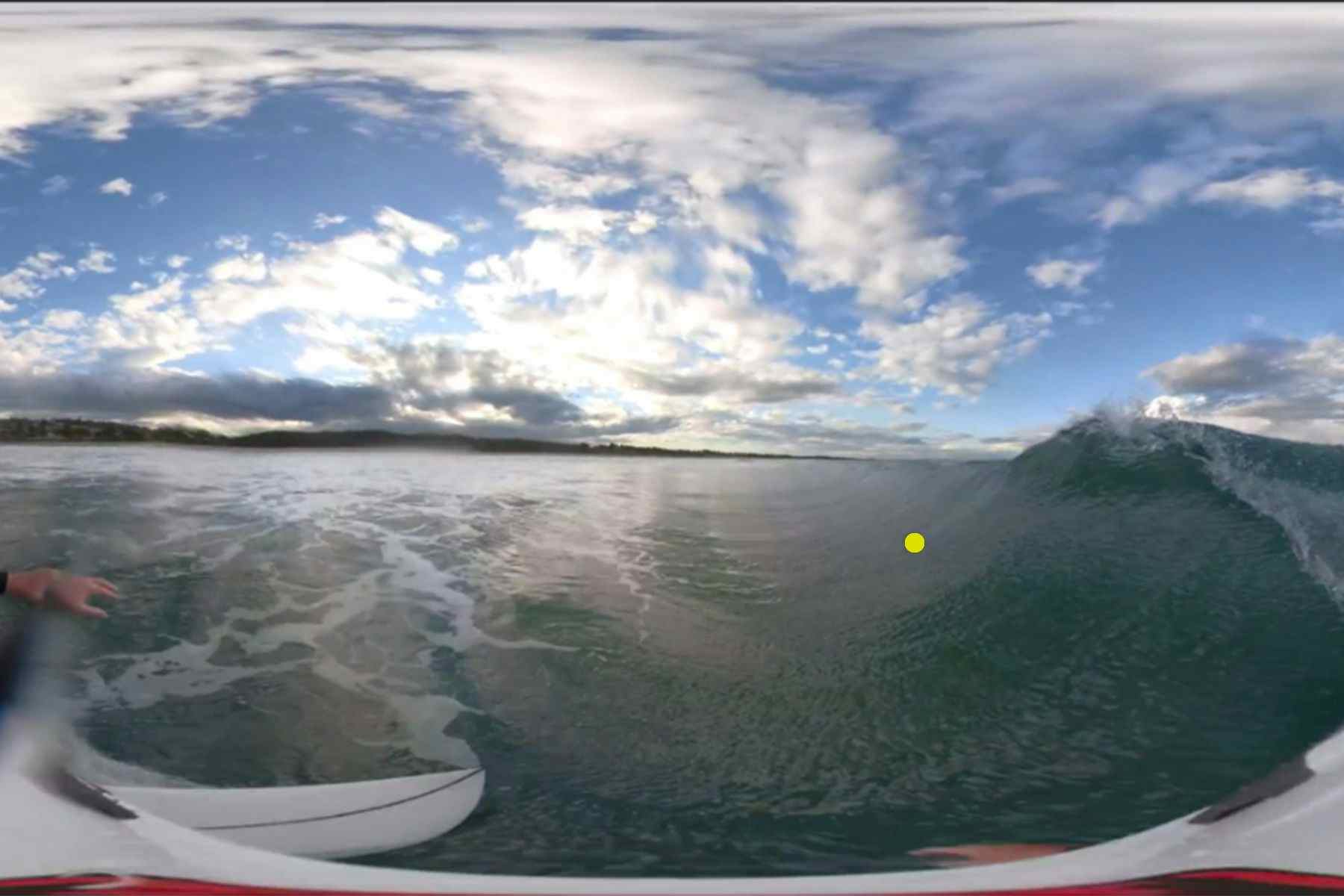
Eye-Gaze Behaviour of Surfers in a Simulated Surf Environment
The importance of where surfers direct their gaze has been a tacit, even if not entirely clear-cut, collective wisdom for a while. As of lately, though, it has been receiving the academic scrutiny it deserves. Sports research seeking to unpack athletes’ visual behaviours has found that elite athletes tend to look at different information-relevant locations earlier and longer than novices, and that these distinct gaze strategies provide them with a superior ability to identify environmental cues and prepare situation-specific motor responses that, ultimately, improve their performance.
For surfers, early fixation on these areas of interest (AOI) can help determine which waves will be surfable, as well as how to accurately predict what the wave will do and what you should do about that, thus optimising the chances to make the most of each ride. Still, whilst the potential of applying the knowledge gathered from these cognitive processes into tailored skills training is there, technological limitations have been, up until recently, a major hindrance in examining eye gaze during surfing.
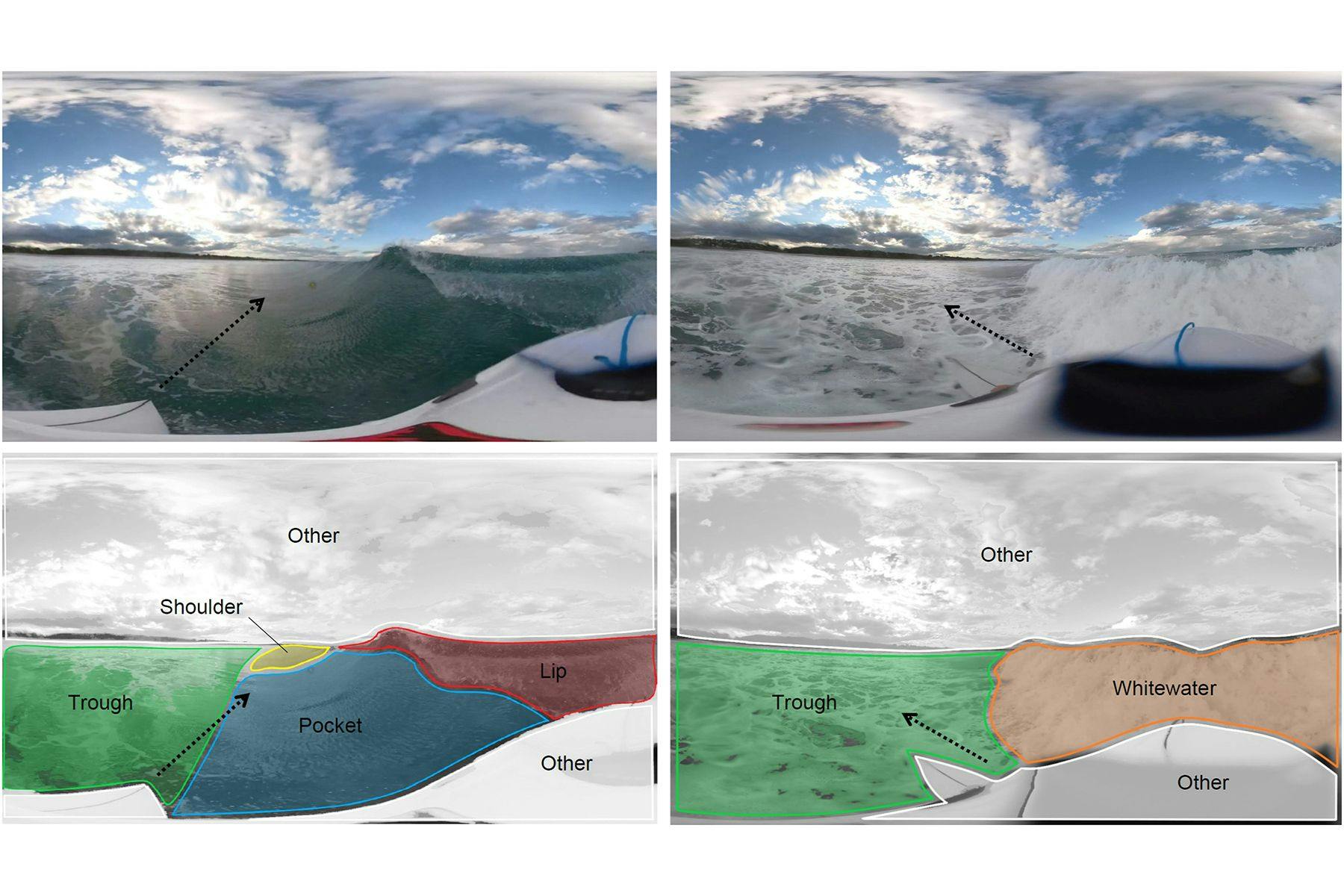
A study out of Griffith University (Gold Coast) in Australia this past June sought to present an alternative. Led by Ian M. Luke, the experiment used immersive video and virtual reality (VR) technology to simulate the real world surfing environment, enabling the researchers to measure and compare the eye gaze behaviours of expert and novice surfers. For that, they had professional surfer Bede Durbidge take 360-degree videos whilst riding several high and low waves. Twenty-four participants – 12 novices (< 20 surf sessions) and 12 experts (2 years + of professional surfing – were then fitted with a head-mounted display and an audio-headset, allowing them to hear and look around the different areas of the surf environment from Bede’s first-person, 360-degrees perspective. An eye tracker camera was installed within the display to record participants’ visual behaviour, and the data gathered was later translated into customized video-files to be examined. The results were in line with other studies in that the visual behaviour of experts and novices indeed differs. Here, the pattern was that experienced surfers were quicker to spot the approaching wave and spent more time fixating at performance-related AOIs, namely pocket, shoulder, and lip, whereas novices directed their attention mainly to the trough and other not-so-relevant AOIs. Based on these outcomes, Ian and his team were also able to support the hypothesis that the technology used in the research offers not only a viable approach to study perceptual-cognitive behaviours within surfing, but train surfers to tap into these strategies to enhance performance.
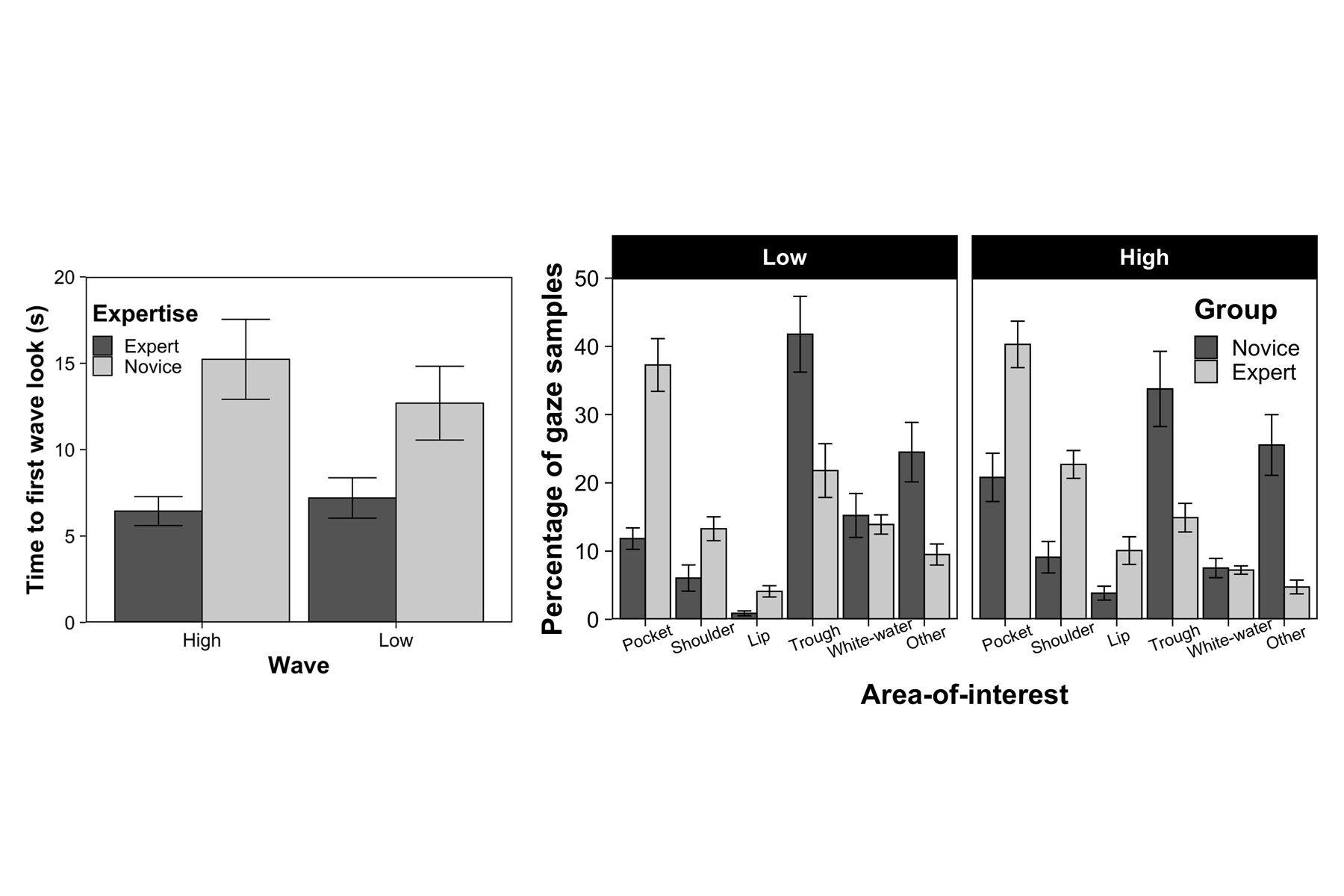
Surf Simply caught up with lead author, Ian M. Luke, to learn more about the research and hear his thoughts on the future of VR technology in surfing.
Ian, can you please start by telling us where the idea for the research came from?
Griffith University Gold Coast had just begun a partnership with Surfing Australia and we had a range of ideas that we wanted to test out – one of which was eye-tracking in a simulated environment/virtual reality. The idea of identifying and exploring Areas of Interest (AOIs) came about after reviewing a lot of old surf-coaching manuals and talking to surf-coaches and experts; from there, it became evident there was not much literature regarding the optimal areas surfers would visually seek during surf performance. This was notable to us early on, because for many other sports – such as basketball, cricket, and soccer – there is a huge amount of vision-based information available, to the point where these sports have seen all kinds of knock-on benefits come out of eye-tracking and the data it has provided.
The lack of gaze data in the surfing world is understandable because the ocean environment itself is not friendly to anything electrical, let alone highly sensitive devices such as eye-trackers and the computers attached to them. And even if one can overcome the constraints of the electronic devices, the surf environment is highly dynamic and evolves rapidly. This means that no two waves are ever the same, which can be an issue for experimental control. With that in mind, our study drew inspiration from a few surf-based research studies: one which had examined surfers’ decision making (Furley), and one which had tested a prototype eye-tracker on river waves (Walz).
We also sought some inspiration from a Red Bull project by Brandon Larson. Together with SMI Technologies, they built a world-first waterproof eye-tracker that could be used in the surf (different from Walz’s study mentioned above). However, being a prototype and requiring masses of computing power and waterproofing, this was extremely expensive to do and didn’t have the experimental control typically associated with a good experiment. It also appeared to be primarily a marketing campaign, not a dedicated pursuit to reveal and publish visual-gaze behaviours of elite surfers.
In contrast, our study was able to maximise experimental control (at the cost of ecological validity) and compare many more surfers in identical conditions, and at very little cost. The Red Bull project, as awesome as it was, would not have been able to send novices and experts out onto the water and have them all ride identical waves over and over again! On top of that, there are no analysis programs readily available that could have then analysed their masses of video data; it all has to be done manually. We scanned through tens of thousands of 360-degree video frames to retrieve data from the still images. Our University has an I.T engineer in the Psych department, John Zhong, who was the brains and programmer behind the study. The entire configuration of the video and eye-tracker was solely his efforts and made the collection of reliable data possible.
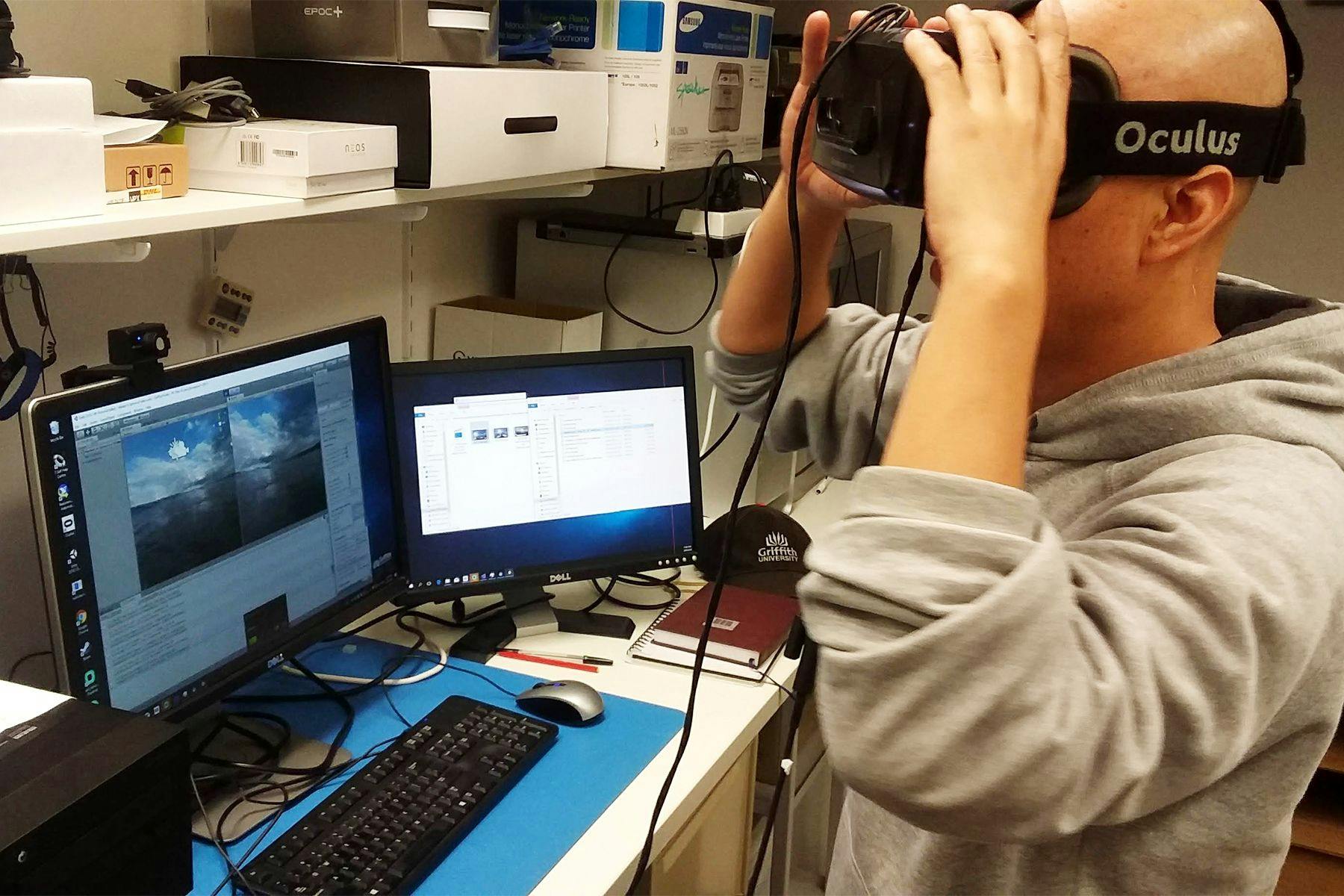
What surprised you the most about the results?
Personally, the most surprising thing was the speed at which the expert surfers found and fixated the waves. The experts were incredibly fast; they were almost rabid in their search for a wave. They would physically snap their heads toward every wave like they knew in advance that it was going to be in that location. Some experts located the waves so fast that it seemed impossible, especially because some of the waves were so distant and, in my mind (as a very novice surfer), did not yet truly present as even being rideable waves. They were truly on their game.
Moreover – and this is a result that was not published – experts would furiously scan horizontally and vertically on the wave during their paddle to it, and while this tended to occur throughout the entire approach, they were intensely committed to this behaviour as soon as the wave was spotted. My un-evidenced interpretation is that they were measuring the wave to determine whether it was surfable. This makes sense: optimal performance would require that an athlete expends their energy wisely. If a wave does not produce particular cues related to speed, shape, colour, and size, then the surfer may save their time and energy, and wait for more ideal waves to come along. This was shown in the aforementioned study by Furley: elite surfers were significantly better at identifying waves that were not ideal for surfing. In the real-world, this would translate to the preservation of energy that can more ideally be expended when better wave opportunities come along.
For sports like surfing, scanning for information in the environment is an extremely important part of performance. One small but interesting example of the above scanning behaviour was stumbled across by accident. Samba Mann (who was one of the expert surf-coaches involved in filming the studies’ 360-video materials) had been out surfing and accidentally bumped his GoPro, resulting in him recording just his face and eyes as he paddled out to, and entered a wave. Throughout the recording, Samba’s eyes were darting and rolling back-and-forth rapidly as he tracked the wave that he was paddling into. This is known as optokinetic nystagmus – a visual behaviour associated with tracking and maintaining the location of moving objects on the retina. This is similar to the way we watch the world moving out of a moving car’s window: ‘slow’ tracking movements as we fixate a tree, followed by ‘rapid’ jerks in the reverse direction to look at something new. It seems as though the motion of the sea and the surfer might mean that they require these same sorts of behaviours to efficiently scan for waves. This goes back to my earlier suggestion that Samba is gauging the overall surfability of the wave, while also seeking the ideal place to intercept the wave – all of which require substantial visual input.

What were the main challenges and limitations of the research?
One of the central limitations of the paper arises from the perspective of Ecological Dynamics. ED proposes that performance (or elite performance) itself is a product or outcome of ongoing interactions with the immediate environmental information. In the real-world surfing environment, there are an enormous number of variables simultaneously interacting that inform one’s surfing performance. In our study, performers were limited because they were not actually able to surf; they were merely standing on ground, but free to behave as though they were surfing. By this ED thinking, if a performer such as an elite surfer is merely nestled within a VR headset, and is not actively flying along an actual wave, then the performer’s behaviours or actions do not truly embody the behaviours or actions that would be seen in the real performance environment. Essentially, the more realistic the physical performance environment that one can participate in, the more likely that the actions of the performer are true and valid.
However, we have argued in our study that participants were not entirely passive. Participants were able to physically (bodily) engage as they liked, and more importantly, their head and torso were able to move freely, like head and torso movements in the real-world. Such head movements resulted in direct and immediate changes to their visual perception in the VR headset – as is the result of this same physical behaviour in the real world. For instance, when participants entered the simulation and found themselves lying atop a surfboard, they snapped their heads around quickly to view oncoming waves. This behaviour, we believe, has much similarity to the actions that one would witness of a surfer atop a surfboard in the real world. A surfer would know this feeling innately, paddling along, and every few seconds, making near-automatic head and eye movements to see what the waves are doing around them. (e.g., Have the waves changed in the past few seconds? Has the wave out the back of the set suddenly peaked a little greater than usual?). Surfers make these head movements regularly, and these were very well replicated in our study.

In the paper, you highlight the potential to tailor gaze behaviour training for performance surfing. Any idea of what these would look like?
One of the important things about eye movements is that we don’t really have to think about where we look; it’s a process that just seems to happen. But where people look gives us insights into what they think is important. Crucially, we are often pretty bad at knowing what it is that makes us an expert – it just feels like a ‘sixth sense’. Eye movements can tap into something ‘hidden’ about expertise.
There are probably two key areas where gaze behaviour may be useful in surf training. First, it may be able to help teach people effective strategies for searching for surfable waves. Examining the eye movements may allow us to harness that ‘hidden’ expertise to try to teach some of that scanning behaviour to novices.
The second area is that vision is such an important sense for refining our movements. When surfing through the waves, adjusting body position is likely driven by a surfer’s ability to project into the future. What we have shown in our paper is that the locations expert surfers look to accomplish this is different from novices. We may be able to teach novice surfers to predict how a wave will behave by teaching them where to look. If you can pair that with training motor movements, that would be a powerful way of improving performance.
Many of these gaze behaviours are likely to naturally develop in elite surfers; it’s probably one of those things that ‘selects’ surfers to keep going to that elite level. I think what we are moving towards with this research is the idea that we might be able to work with a novice surfer, show them their own behaviours, show them the behaviours of experts, and teach them to move in that direction. One of the important things that came out of our research is that surfers tend to be very open to this sort of feedback and introspection. They are always interested in being better, and understanding what is, and what isn’t working for them.
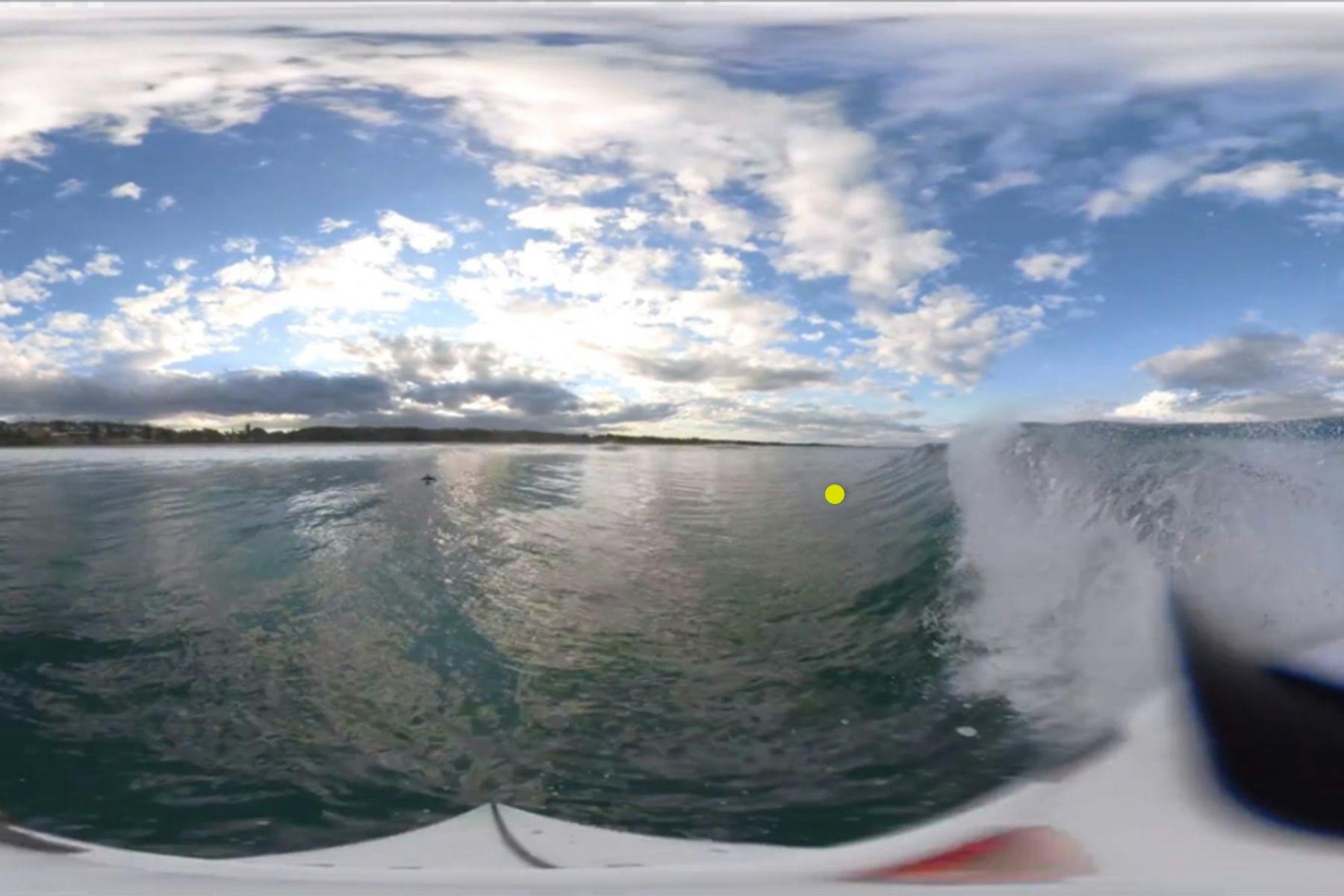
Your research made use – and showed the effectiveness of – immersive video and virtual reality for studying sports performance. How do you see this kind of technology being implemented across the various sectors of surf training in the future?
Yes, there is much use in video technologies – eye-tracking aside – and I can see a market for this type of technology being implemented across many sectors of surf training. Many already use simple video-recordings of surfers which are typically presented on regular screens to enhance other surfers’ learning. However, these are filmed from the beach, or a drone, or from the first-person perspective using a GoPro. This is a very effective way to provide feedback or to demonstrate elements of some optimal technique or manoeuvre to be practised, and while this type of regular video will always have a place in surf training, I believe we will see a greater shift toward the more immersive 360-degree video formats – particularly where it is important for the learner to take a full first-person perspective of the performance environment, which, at least immediately, would be in minimising injury and to enhance mind surfing (bearing similarity with mindfulness practice, where surfers are encouraged to rehearse the thoughts and movements of surfing while looking out towards waves from the beach).
This is already the case with many expert surfers: they are encouraged to practice mind surfing in competition locations so they may “see” and “feel” themselves surfing those potential competition waves. Surfers are also known to practice mind surfing using simple videos of the wave and competition locations, as this helps them to mentally prepare for a session. They might use self-talk to get into the proper performance mindset, and utilise cues in the video to direct their attentional focus. Yet I believe that surfers are missing out on the next major upgrade to this practice: they could take mind surfing one step further and implement immersive 360-degree video into their training routine.
Take the scenario where your four best surfers have never been to, or competed at Jeffrey’s Bay, and they are a little anxious. Using 360-degree video, these athletes can spend hours chilling at the timber deck above the dunes, or floating about for several hours on a surfboard and observing how the landmarks can be used to position oneself optimally in the line-up. Athletes can simply put on a VR headset and be preconditioned to the general conditions of the surf location before ever arriving.
I personally devoted upwards of 60 hours editing and analysing 360-degree footage of surf locations along the east coast of Australia; these video simulations were so realistic that I’m no longer sure where I have actually been to or not. I know that I have never been to Casuarina beach or Back beach in New South Wales, but thanks to the 360-degree videos, I “feel” like I have spent a month at each location, living and surfing there on a beautiful holiday. The landmarks, beaches, houses on the hill, and waves are all etched into memory like I personally spent hours surfing there.
All this was gained just from wearing a VR headset and simply watching the waves pass me by (in reality, I was sitting in a cold, dull, research laboratory in a basement). I’ve never surfed at Snapper Rocks on the Gold Coast, but after re-living several hours of Bede Durbidge’s barrels, I can now say with some precision where the sets tend to roll in from, how powerfully the barrels crash high on the sand, and how dangerous the rocks are! Which speaks to another good point for implementation – danger.
Surfers regularly face high-risk conditions that are potentially life-threatening – but they can limit this risk by gaining further education about the surf environment as well as by working to maximise their psychological readiness to the environment, e.g. working to reduce anxiety about riding big waves.
When it comes to gaining further education about the surf environment, we can imagine the case of a novice surfer, who for the first time has unexpectedly found themselves surfing into a powerful barrel. Unbeknownst to the wobbly yet excited surfer, the barrel is about to collapse and might cause them some degree of harm. We actually stumbled across this very topic during pilot-testing for our study. One expert, during his first experience in 360-degree video, was slowly scrolling back-and-forth, frame-by-frame through a barrel. Suddenly, he pointed to some part of the wave-wall and stated that the wave was about to collapse. Sure enough, just a few frames later, the wave collapsed and completely pummelled the surfer into a sandbank. This naturally led to discussions about how particular warning-signs could be used for educating novice surfers,. It should be noted that, without the 360-degree perspective, it would have been difficult to see and truly embrace the locational and visual significance of the warning sign that the expert had detected.
As a result of the equipment designed for our study, we can take this one step further and ensure the learner can actually see, in the 360 display, where an expert surfer was actually looking during their trials in the simulation. The eye gaze data, appearing as small yellow dots, is superimposed within the 360-degree video. This is called eye movement modelling examples (EMME), and is another tool that can be employed to guide surfers through surfing scenes. To enhance the effectiveness of the visual data the surfers are seeing, an expert audio-commentary may also be added where they describe their thoughts and intentions relative to the actions that were performed on the wave, providing valuable insight into the expert’s decision-making at that time. The final result, for example, is that a surfer, perhaps for the first time viewing the dynamic interior of a barreling wave in 360-degree video, also see’s the yellow gaze-points that were left behind by an expert. At some critical point, the simulation slows or is paused, and the expert’s audio-commentary draws attention to a vital area within the display, such as the bottoming-out of the barrel on sand. The expert may describe the mechanics of this area, and what it means for the learner, and outline the ways in which that area can be identified from its visual appearance.
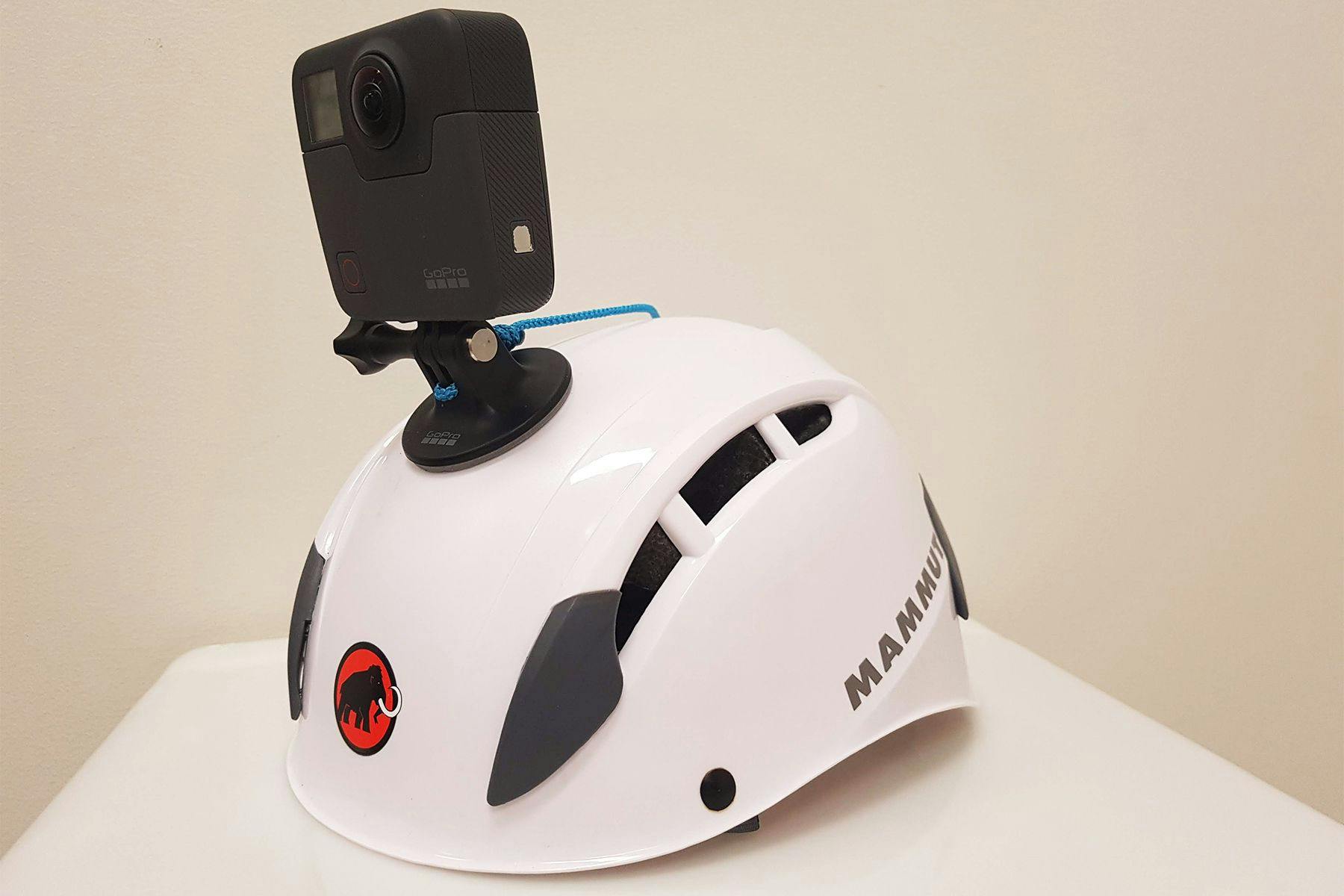
As for the case of 360-degree video helping to maximise a surfer’s psychological readiness, the likelihood of harm increases for surfers who are not psychologically prepared for those higher-risk conditions such as riding large waves. Higher waves that induce a greater fear-response may detrimentally impair one’s physical and cognitive performance, and decrease the likelihood of the surfer safely riding a wave to their full potential. To this end, 360-degree video may be used to expose surfers to new and gradually fear-inducing scenarios appropriate to their individualised needs (e.g., high waves, unfamiliar competition locations). This could effectively attenuate the risk-of-harm by preconditioning surfers to novel and threatening environments. Waves of varying heights and intensities can be pre-filmed, then gradually provided to athletes for viewing to decrease their anxiety over time.
One final point about these approaches described is that surfers spend a vast amount of time just waiting for waves to catch. One bad weather event could disrupt weeks of planned training sessions, costing valuable time that could be spent focusing on skills training. Surfers would benefit greatly from utilising high-tech tools to bridge the gap between sessions.
As a surfer, did you experience any changes in the way you use your vision whilst surfing after this research?
Personally, I’m not a committed surfer, and some surfers who read this would see it as a huge limitation! My response to this is that I grew up surrounded by crocodiles at the top-end of Australia, so going ‘into’ the water is still considered madness to me. However, I’ve been a kayak guide for about 10 years, doing ocean tours and leading adult and kids camps; that’s the extent of my ocean-going experience. I was also an obsessive skateboarder. I say this because the skills required for success in these sports/ hobbies have some degree of overlap with surfing, and gives me a greater appreciation for what surfers go through on their unique surf-development journey.
Still, I do have one observation I noticed following the study. This was a realisation I had after kayaking with novice kayakers on a 55km kayaking and camping trip. Essentially, I noticed simple visual behaviours that many experts seem to share, whether they be expert surfers, skaters, or kayakers. In these sports, as well as many others, looking to the area nearest to oneself (e.g. the feet) often signifies a novice performer who is unstable and seeking visual cues to promote balance. On the other hand, looking away from the self and deep into the performance area (to a wave, some rapids, or skate ramp) signifies an experienced performer who has attained automaticity over these basic balance needs.
From a cognitive perspective, expertise develops through attaining this automaticity; it is a fast and efficient form of processing requiring few attentional resources. Importantly, automaticity frees up attentional resources that can be used elsewhere, such as peering around the performance environment and planning your next move. Therefore, expert surfers that have attained automaticity over simple balance requirements should spend more time looking to distant areas (such as desirable sections of a distant wave) and do not need to look to the immediate surroundings to successfully remain upright. This balancing-act just happens without looking, and seemingly without any thought involved.
Although this is a very simple observation, it’s interesting to think that this visual behaviour may be one of the many indicators differentiating levels of expertise for many types of sports. I think that, on a difficulty scale of juggling one’s balance while also visually exploring for performance information, surfing would be at the farthest end, up there with the most difficult sports in the world. There are very few sports that require a surfers’ level of cognitive gymnastics. Funnily enough, we saw that experts in the surf simulation were also peering outward, confidently, in this manner, whereas novices were naturally drawn to gazing toward areas around their feet and the surfboard. That said, I should note that this was our general interpretation, not an outcome that was analysed and found as such – but are more general observations of the video results.
Is there a next step for this study?
A few ideas for follow-up projects were in development, but these have been put on hold for the time-being due to Covid and becoming a full-time Dad. One idea was to explore the wave-related environmental cues that tell surfers whether a wave is surfable or not, and then, employ this gained information within a surf skills training program to see whether novice and intermediate surfers can directly benefit from the information whilst showing the transfer of skill. This project was parked aside, and I will have to consider whether to return to this in the future.
As for my unrealistic, super-futuristic expectations for this entire area of research (that I hope will be achieved within a decade)…
I made an earlier point about how difficult it is to find repeatable, identical, real-world waves – yet the new generation of artificial wave machines might be a solution to this problem. A hypothetical study could obtain world-class eye-tracking glasses and house them in waterproof cases, which could be attached to and powered by high-speed laptops fitted into waterproof cases carried in backpacks (similar to Red Bull’s project). This configuration could then be used by novice, intermediate, and expert surfers – a vital comparison that has never been performed. All surfers would perform straight runs and free-surfing runs along the artificial waves at a wave park that can provide moderate to large waves. The hope would be that the artificial waves are near-identical to each other, which would provide researchers with well-controlled conditions resulting in highly reliable side-by-side comparisons for the differing levels of expertise. This would result in an overwhelming amount of information about what surfers are doing with their eyes and when, thus revealing masses of knowledge about expert surfers’ visual-perceptual behaviour. The full gamut of visual data could be analysed: fixations, saccades, and potential to discover whether ‘quiet-eye’ visual behaviours exist for surfing.
**********
The author and Surf Simply would like to thank Professor Ian Luke for his assistance in the article.
Reference: Ian M. Luke, David L. Neumann, Matthew J. Stainer, Leigh Ellen Potter, Robyn L. Moffitt, Eye-gaze behaviour of expert and novice surfers in a simulated surf environment,
Psychology of Sport and Exercise, Volume 62, 2022, 102221, ISSN 1469-0292, https://doi.org/10.1016/j.psychsport.2022.102221.